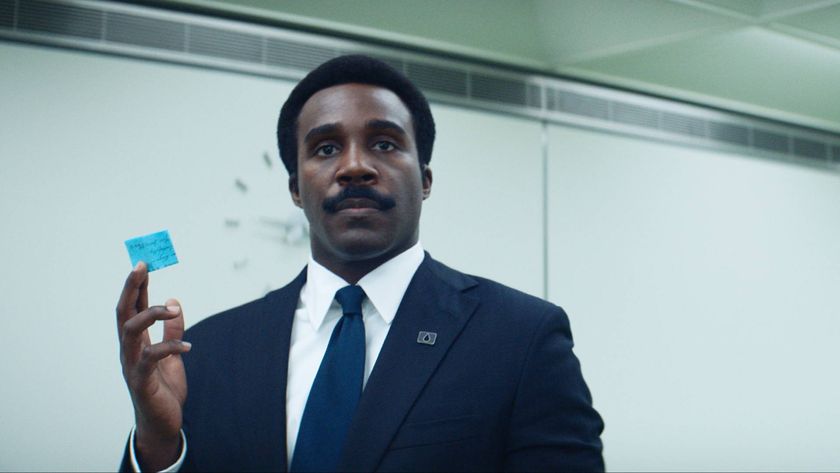“I didn’t really know what I was working on” – How nine people at Rare created a seminal classic with GoldenEye
Retro Gamer talks to the people that helped make GoldenEye the iconic first-person shooter it still is today
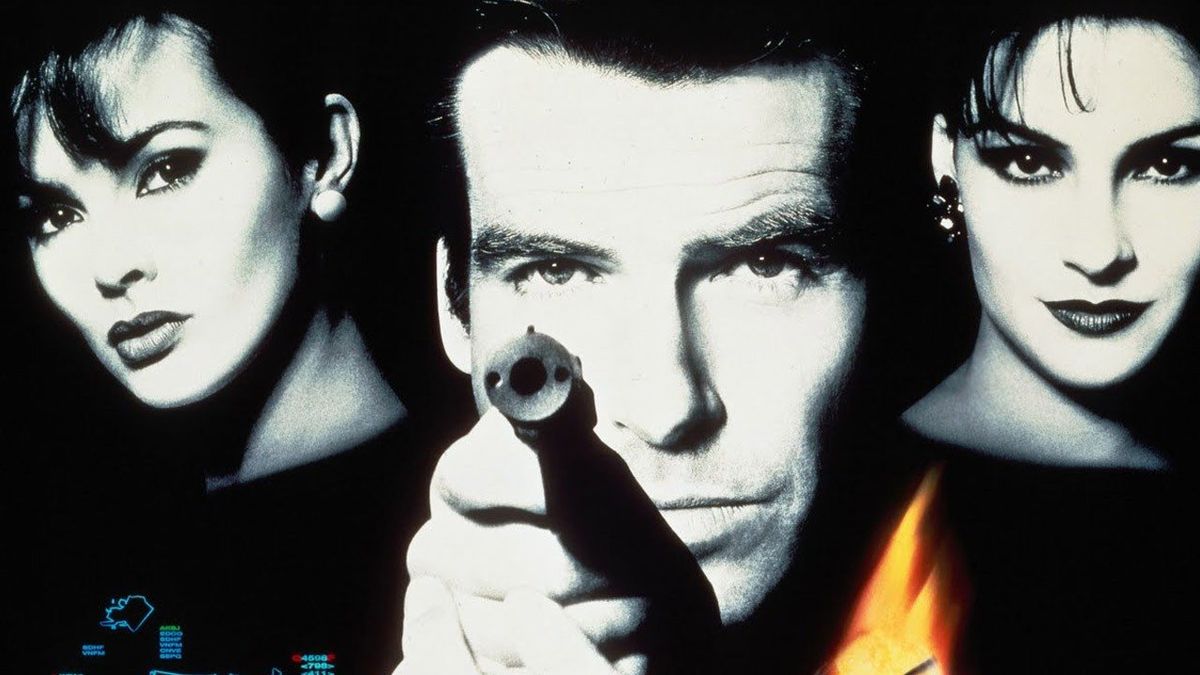
Gamers knew the score in the Nineties. Rare made platformers, you played first-person shooters on PC and any game based on a film was going to be awful. Then came GoldenEye 007 and changed all that. It was released two years after the film had hit the big screen, only a few months before the next entry in the franchise, Tomorrow Never Dies, came out, and with no great expectations of success, even from the team that had developed it.
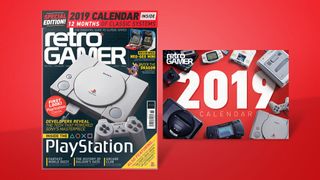
Get every monthly edition of Retro Gamer, the award winning guide to classic video games, delivered straight to your door for less than £4 an issue
It went on to shift a staggering 8 million copies, making it the third biggest selling title on Nintendo’s 64-bit console, and invariably appears in the echelons of those perennial ‘Best Ever Games’ lists. That success is perhaps even more remarkable when you consider that for the majority of the dev team, GoldenEye was their first professional title. Indeed, Tim and Chris Stamper, the heads of Rare, had to remind the team that “this wasn’t their university project” as development dragged on for over three years.
More than that, GoldenEye proved that a story-driven FPS could work on consoles, and that deathmatches never really get old. Gathering together all nine core members of the team has been inspiring. Some stayed at Rare and worked on its spiritual sequel Perfect Dark. Some went on to set up Free Radical, the home of the TimeSplitters series. Some have stayed in games, others have moved on but all can agree on two things: being part of the GoldenEye team was an experience they will never forget and playing as Oddjob in multiplayer is always cheating.
Polishing gold
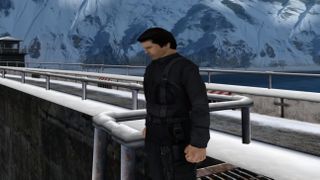
For Mark Edmonds, his first contribution to the development of GoldenEye was sat alone in a room in the Stamper mansion, filleting joints. “I didn’t really know what I was working on,” explains Mark, understandably. “I was asked to investigate creating filleted joints for an animated 3D character system; basically, a smooth skin over joints, like an elbow, rather than just having a solid block for an upper and lower arm. I had no idea it was connected to James Bond but I must have passed the test because I got moved over to the stable block and onto the team proper. It was great just to be working on my first video game!”
Programmer Mark joined project leader Martin Hollis and artist Karl Hilton and the trio got to work on early builds of GoldenEye. Initially, the game was heavily influenced by Sega’s Virtua Cop with Bond following a predetermined route through levels. “We were using this amazing new invention called the analogue stick to aim a crosshair,” grins Mark. “But then we thought, ‘Wouldn’t it be cool to play a game-like Doom with actual 3D graphics? That would be a new experience!’ And we knew the Nintendo 64 was capable of rendering 3D graphics from any orientation or direction.”
The team decided to take Bond ‘off the rails’, though knowing exactly what the N64 was capable of required a good deal of faith. Its development system used high-end Silicon Graphics machines, a pleasure to work with, if prone to overheating, whilst the specifications of Nintendo’s forthcoming console were yet to be finalised. “I vaguely remember being disappointed seeing the tech demos running on the first development consoles,” admits Mark. “But once our own artists got going onto the project, they managed to make the graphics look good!”
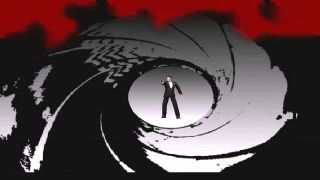
Mark beavered away on the GoldenEye engine, taking art created in such packages as Alias and GameGen and rendering them in game. He helped develop the system which handled the motion captured animations, pioneering in their day, and worked on the enemy AI, so your foes could at least attempt to outwit your agent before crumpling in agony when you shot them in the groin.
Sign up to the 12DOVE Newsletter
Weekly digests, tales from the communities you love, and more
Yet despite all these innovative features, the team really wasn’t sure anyone else would be impressed. “It was amazing to travel to the E3 show in 1997 but I don’t remember much reaction to the game there,” says Mark. “It probably wasn’t the right environment for people to get into it. It was only afterwards when the reviews started coming that I realised people actually did like it.”
Behind the iron curtain
David Doak smiles rather proudly when we ask him about the legacy of his innovative work on mission design and enemy AI for GoldenEye. “My favourite moment was meeting the original Valve guys at ECTS, a UK trade show, in 1998 and them joking that GoldenEye had forced them to redo a bunch of stuff on Half-Life. They went on to do all right.”
When David joined the team in late 1995, plenty of the basic gameplay was in place. The controls were responsive, the core loop of ‘encounter enemy, shoot them, move to next’ worked efficiently and the audio and visuals gave solid feedback. “The obvious issue was that levels were fairly barebones,” he explains. “They had been constructed to test gameplay, though even at this stage, there were innovative features which staked out the ambitions for the game, like the alarm system in Severnaya Bunker. It could be triggered by a guard who ran to press a big red button or set off by the cameras ‘seeing’ Bond. The FPS paradigm of the day was Doom, which had you shooting monsters and collecting coloured keys to open doors and we really wanted to step away from that.”
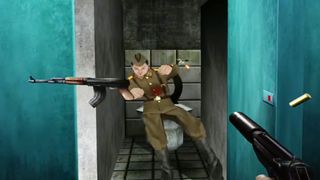
Though David acknowledges that at its most basic, this involved reskinning the ‘keycard’ concept with decoders, covert modems and all manner of gadgetry, he was determined to vary the pace and rhythm of levels. “Severnaya Bunker 1 has a lovely, juicy density to it,” he enthuses, “a very simple, small space but, particularly on higher difficulties, there is a lot to do with juggling objectives, alarms and enemies. The Bunker 2 cell escape was pleasing to set up; the stealth came together well and was something that felt fresh, in a pre-Metal Gear Solidand Thief world. And obviously Facility is a continuing source of chuckles that Dr Doak is in there...”
Yes, David makes a prominent cameo as the scientist/secret agent, though most of the team are featured somewhere in the game, whether as the faces of nameless guards or doing silly turns on computer monitors. Despite being satisfied with the variety of mission goals and interesting level design the team achieved, David is the first to admit not everything they tried quite came off.
“Some level setups were exercises in damage limitation. For the more open levels like Runway and Depot, it was hard to construct meaningful gameplay and the results are patchy. And the Escort missions seemed like a good idea at the time. I mean, what could possibly be more fun that having your performance judged on whether Natalya would randomly throw her head in the path of a bullet or walk into an explosion?”
Notwithstanding a few misfires, the story mode was groundbreaking in offering the player choices. Should you go in with all golden guns blazing or use your license to kill sparingly? Guards could be sneaked past but how satisfying it proved to take out goons with a flurry of headshots. The way your foes responded to your actions and the surprising, sometimes exasperating, interventions of NPCs all created the sense that this was a living, bleeding world.
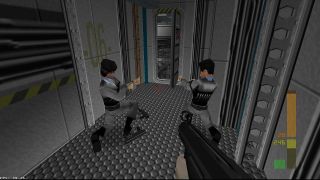
“Refining the AI was largely a process of brokering deals with Mark Edmonds,” says David. “I’d make my case that a feature would allow me to script a more interesting setup, Mark would shake his head, explain how it wasn’t possible then go back to his desk and do some coding wizardry to make it happen. Legend.”
Dressed to kill
On the GoldenEye credits, B Jones role is listed as ‘costume designer’. It might be a tongue-in-cheek reference to the world of film, but it proved surprisingly apt as no one is more adept at fashioning a pixel tuxedo than she is. “We originally had three other Bonds in the game,” she explains. “I had to make different tuxedo textures within a 64x32 pixel texture. Moore got the white one with the carnation, Dalton got the double breasted and Connery got the classic Sixties tux. And all their faces came from my reference books.”
With no handy internet libraries to consult in the mid-Nineties, much of the look of GoldenEye came from B’s extensive collection of Bond books and memorabilia. Character photos were scanned, gadget manuals were carefully studied and lunchtimes were spent watching the Bond back- catalogue on videotape. “We only had a half hour break so we’d get through them in 20 minute segments and it took ages,” she laughs.
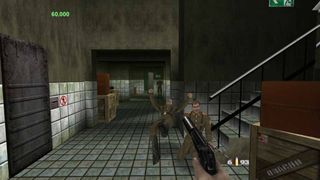
The team did have some access to the film set and lugged their swanky new digital camera to Leavesden Studios in Hertfordshire to photograph as much as they could. “That camera was huge, really heavy and cost about two grand,” she remembers, “but it was how we got most of our reference material, like for Statue Park and inside the main Archangel SK complex both before and after it was blown up. I used that same camera to take the photos of faces we used in the game. I would take front, side and back of the head shots and stitch them together. This was before Photoshop so all I had was this pixel painter called NinGen and just 38x32 pixels for the textures. You try drawing any believable human face in that!”
"We were using this amazing new invention called the analogue stick to aim a crosshair."
Mark Edmonds
Two decades on and it’s quite easy to raise a Roger Moore-esque eyebrow at the blocky heads in the game but at the time, this was pioneering work, as was the use of motion-capture to give character movement a sense of realism. The initial setup was a ‘flock of birds’ magnetic system in which all of the markers on the body were directly careful with the moves or else it would come flying off the wall and hit the performer,” she winces.
Perhaps the most effective use of this new technology was in making your foes look like you’d really slugged them. Shoot them in the shoulder and they would recoil in pain; shoot them in the head and they’d crumple to the floor. “We wanted the animations to look like the victim wasn’t expecting it, so we got [team member] Duncan Bottwood to close his eyes and I’d suddenly slap him on the shoulder without telling him. We didn’t want that split second of bracing to be visible in the capture. We even had ropes tied around his waist to pull him off his feet. We had plenty of soft mats around but I don’t think we could have got away with it in today’s health and safety- conscious environment...”
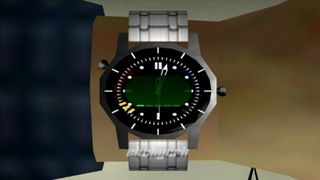
It was this attention to detail in every aspect of GoldenEye’s visuals that helped make the game so immersive. Since leaving Rare, B has worked in film and TV, including credits on Doctor Who and Guardians Of The Galaxy, but still keeps in touch with her old coding buddies. We wonder if she ever felt conscious of being the only woman on the team or if gender stereotypes ever got in the way? “No and no, and clearly you don’t know me,” she replies, bluntly.
License to thrill
Karl Hilton can still remember when Martin Hollis popped the question. “He opened with, ‘Do you like James Bond?’” chuckles Karl, who was the first person to join Martin on the team as lead artist. “I was a big Bond fan and it sounded great fun but I was definitely worried about the reputation that movie tie-in games had back then. I’d just started at Rare and knew they didn’t release bad games but I do remember looking at Blast Corps, which was being made next door to us, and thinking it would probably be much more popular than the movie-tie in we were starting on.”
Karl saw the potential for drawing on the older Bond films he had grown up with, particularly those starring his favourite Bond, Roger Moore. He initially wanted to include the Liparus submarine base from The Spy Who Loved Me but realising this was too complex, he instead opted for the Drax shuttle base from Moonraker. The many nods to the wider Bond world and the clever way the camera flew into the back of 007’s head at the start of each level really helped players feel like they were morphing into the suave secret agent.
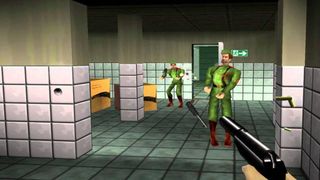
“We wanted to emphasise that the player was James Bond but in an FPS you rarely get a chance to see yourself,” Karl says. “This seemed like a perfect way to remind the player. Roger Moore played Bond, Pierce Brosnan was playing Bond at the time, now you can step into Bond’s shoes, too.”
Subtle touches, like the cinematic curtain of blood that descends the screen when you die and the cuff of your tuxedo clearly visible when you check your watch for important mission information, all added to that authentic Bond feel. The watch also served another purpose, explains Karl. “We all agreed that keeping screen clutter to a minimum would give you the most immersive feeling and the watch helped you feel like you were 007 and not a generic FPS player. Although we did always joke about how short-sighted our Bond appeared to be, staring at his watch so closely.”
Which brings us to our key question: just how important was the licence? The game was undeniably an exceptionally well-crafted shooter, with many innovative features, but without Bond, would it have had the same critical and commercial success?
“What could have been construed as a violent first person shooter was opened up to a much broader family audience because, culturally, James Bond is allowed to kill people and not be seen as bad,” argues Karl. “It meant children could ask parents for the game! I hope it would have done well anyway that but I doubt it would have had the penetration into popular culture that the James Bond link gave it. I think Perfect Dark supports this to some degree. It was, in almost every way, superior to GoldenEye, as we’d learned so much from our first game- making attempt, yet it sold less than half [the copies]. The chance to play as James Bond is a great selling point.”
This article originally appeared in Retro Gamer magazine. For more great gaming coverage, you can subscribe to Retro Gamer here.
12DOVE was first founded in 1999, and since then has been dedicated to delivering video game-related news, reviews, previews, features, and more. Since late 2014, the website has been the online home of Total Film, SFX, Edge, and PLAY magazines, with comics site Newsarama joining the fold in 2020. Our aim as the global GamesRadar Staff team is to take you closer to the games, movies, TV shows, and comics that you love. We want to upgrade your downtime, and help you make the most of your time, money, and skills. We always aim to entertain, inform, and inspire through our mix of content - which includes news, reviews, features, tips, buying guides, and videos.
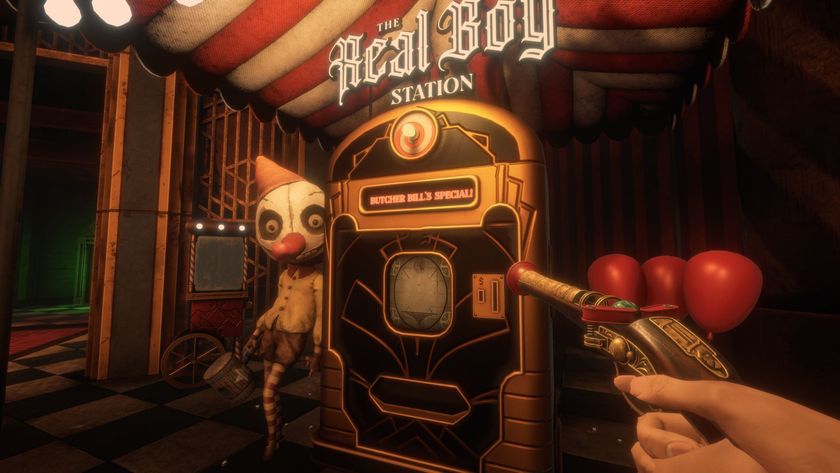
OG BioShock director recommends one very BioShock-y Steam Next Fest game that already has 500 "very positive" reviews
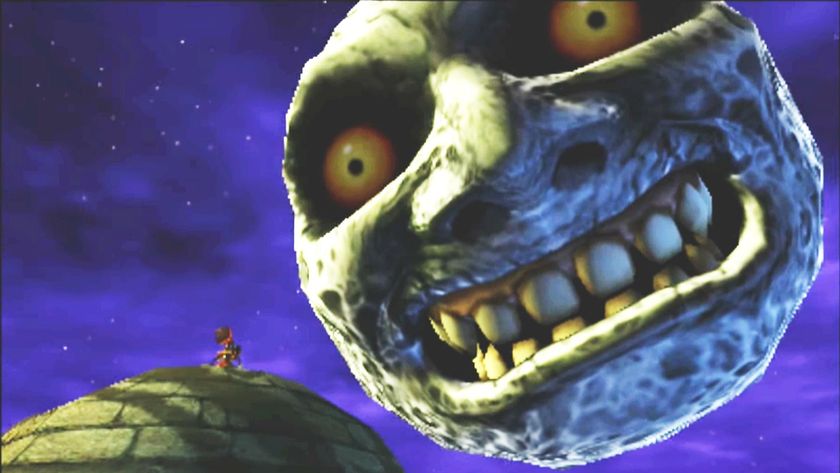
Despite Zelda: Majora's Mask basically being a horror game, one of its key devs didn't think its creepiest features were scary at all: "People on the team were like 'whoa!'"
Most Popular








